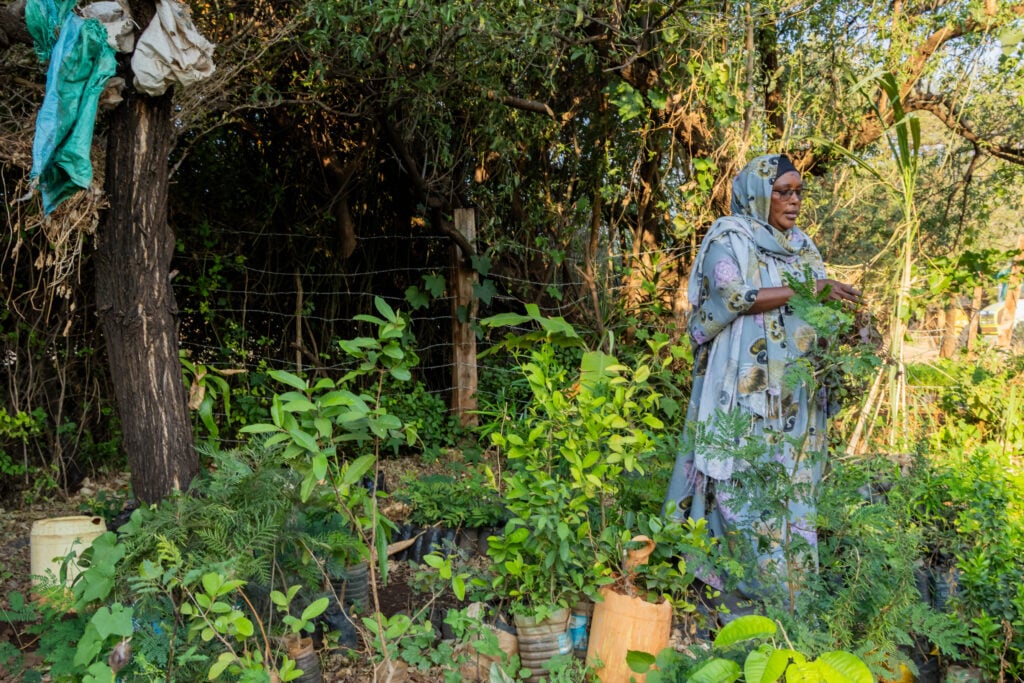In Isiolo town, northern Kenya, a group of 20 women known as Tulla Biftu is forging new paths in resilience and sustainable agriculture. Through cricket farming, tree planting, and food production, they are building a diversified livelihood in the face of climate change and insecurity.

Founded in 2010 as a savings group, Tulla Biftu—a name loosely translated from the Borana language as “the well that shines like the morning star”—has since expanded its scope, embracing agri-food systems and climate-smart agriculture while contributing to environmental conservation. On their quarter-acre kitchen garden, the women grow trees and vegetables. They also sell camel milk and prepare nyirinyiri, a local delicacy made from camel meat.
From Nuisance to Nutrient
Recently, the group ventured into cricket farming as an alternative source of income. Until two years ago, the women regarded crickets as noisy pests that disturbed the peace. But things changed when one member introduced the group to the income-generating potential of rearing crickets.
‘Crickets are common in the area, but we didn’t realise we could turn them into a source of income.’
Tulla Biftu is now one of 34 groups trained under the (B)eat the Locust project, which aims to support around 1,000 cricket-rearing entrepreneurs and desert locust collectors across northern Kenya. The initiative is designed to help communities diversify their incomes through insect value chains.
Urban Adaptation in a Changing Climate
‘We chose to move to an urban area to find alternative income sources to take care of our families,’ says Habiba Wario, a 52-year-old member of the group. Habiba donated part of her land for the group to construct their cricket-rearing facility. ‘Crickets are common in the area, but we didn’t realise we could turn them into a source of income.’
Another member, Asha Yussuf, 35, is a mother of three who rears chickens at her home near the group’s cricket farm. With the launch of the cricket-rearing venture, she’s hopeful that feed will become more affordable.
‘The high cost of feed is my biggest limitation,’ she explains. Asha keeps 130 chickens and spends 250 euros each month on feed. Even though she owns an incubator that can hatch 354 chicks every 19 days, the prohibitive cost of feed means she can only raise 100 birds. ‘There’s a ready market for my chickens, and cricket farming will be a big boost by providing an affordable and sustainable supplement for feed,’ she adds.
A Powerhouse of Nutrition
Crickets are a highly nutritious food source, especially valuable in low- and middle-income countries where malnutrition remains a major issue. They are rich in both macronutrients and micronutrients, making them a strong dietary option for improving health and supporting livelihoods.

By dry weight, crickets contain 50–72% protein, 10–46% fat, and 4–8% crude fibre. They provide all essential amino acids and have a higher protein content than soybean meal, fish meal, and other commonly used animal proteins. Crickets also supply healthy fats—including omega-3 and omega-6 fatty acids—which benefit heart health and help reduce inflammation. They are further enriched with a wide range of vitamins and minerals.
About (B)eat the Locust
The (B)eat the Locust project was born in the aftermath of Kenya’s last desert locust invasion, which was addressed mainly with synthetic chemical pesticides that caused significant environmental harm. The project’s main objective is to diversify the livelihoods of pastoralist communities in locust-prone areas through a scalable and environmentally friendly insect value chain.
The initiative follows three main pathways:
- Promoting biopesticides through policy at both the county and national levels as the preferred method for controlling locust outbreaks
- Encouraging communities to build livelihoods based on insect value chains
- Establishing insect value chains for both human and animal consumption
Funded by the Dutch National Postcode Lottery, the project targets pastoralist and agro-pastoralist populations in the arid and semi-arid counties of Laikipia, Samburu, Isiolo, and Marsabit.